
A hull is the watertight body of a ship, boat, or flying boat. The hull may open at the top, or it may be fully or partially covered with a deck. Atop the deck may be a deckhouse and other superstructures, such as a funnel, derrick, or mast. The line where the hull meets the water surface is called the waterline.
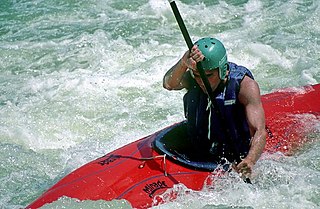
A kayak is a small, narrow watercraft which is typically propelled by means of a double-bladed paddle. The word kayak originates from the Greenlandic word qajaq.

On a sailing boat, the shrouds are pieces of standing rigging which hold the mast up from side to side. There is frequently more than one shroud on each side of the boat.
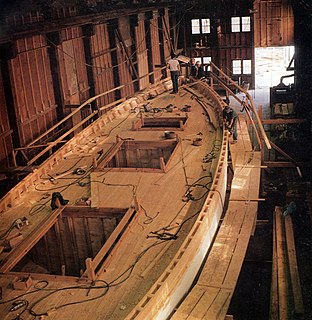
Boat building is the design and construction of boats and their systems. This includes at a minimum a hull, with propulsion, mechanical, navigation, safety and other systems as a craft requires.

An outrigger is a projecting structure on a boat, with specific meaning depending on types of vessel. Outriggers may also refer to legs on a wheeled vehicle that are folded out when it needs stabilization, for example on a crane that lifts heavy loads.

A spinnaker is a sail designed specifically for sailing off the wind on courses between a reach to downwind. Spinnakers are constructed of lightweight fabric, usually nylon, and are often brightly colored. They may be designed to perform best as either a reaching or a running spinnaker, by the shaping of the panels and seams. They are attached at only three points and said to be flown.

The Zodiac Milpro Futura Commando 470 or in short FC470 Combat Rubber Raiding Craft (CRRC), also known as the "Combat Rubber Reconnaissance Craft," is a specially fabricated rubber inflatable boat often used by the U.S. Navy, U.S. Marine Corps, the U.S. Army, and others. The CRRC is typically called "Zodiac," referring to the boat's manufacturer, Zodiac Milpro.
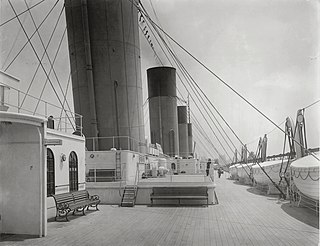
A deck is a permanent covering over a compartment or a hull of a ship. On a boat or ship, the primary or upper deck is the horizontal structure that forms the "roof" of the hull, strengthening it and serving as the primary working surface. Vessels often have more than one level both within the hull and in the superstructure above the primary deck, similar to the floors of a multi-storey building, that are also referred to as decks, as are certain compartments and decks built over specific areas of the superstructure. Decks for some purposes have specific names.
This is a glossary of nautical terms; an alphabetical listing of terms and expressions connected with ships, shipping, seamanship and navigation on water, but not necessarily on the sea. Some remain current, while many date from the 17th to 19th centuries. The word nautical derives from the Latin nauticus, from Greek nautikos, from nautēs: sailor, from naus: ship.

Clinker built is a method of boat building where the edges of hull planks overlap each other. Where necessary in larger craft, shorter planks can be joined end to end, creating a longer strake or hull plank. The technique originated in Scandinavia, and was successfully used by the Anglo-Saxons, Frisians, Scandinavians, typically in the vessels known as cogs employed by the Hanseatic League. Carvel construction, where plank edges are butted smoothly, seam to seam, supplanted clinker construction in large vessels as the demand for capacity surpassed the limits of clinker construction..

The 25 ft Transportable Port Security Boat (TPSB): is a twin outboard motor, open deck, all weather, high performance, moderately-armed platform capable of operating in inner harbor/near shore environments in light sea conditions. It was first built in FY97 by Boston Whaler in Edgewater, Florida, for the US Coast Guard, Maintenance and Logistic Command. The 25 ft TPSB is designed and configured to support Port Security Units as an inshore/harbor surface interdiction response asset in accordance with Required Operational Capabilities (ROC) and Projected Operational Environment (POE) for Coast Guard Port Security Units (PSU), COMDTINST 3501.49 (series). The basic design is based on the standard Boston Whaler 25 ft Guardian hull, customized to functionally suit the TPSB mission requirements. The basic craft arrangements consist of a centrally positioned control console and leaning post with an open work deck and low non-obstructive gunwales. The TPSB is outfitted as a military gunboat with three (3) hardened weapon positions: (1) forward .50 caliber (12.7 mm) tri-pod, (2) gunwale - mounted 7.62 mm M240B Machine Gun pipe pedestals, port and starboard.

The beam of a ship is its width at its widest point. The maximum beam (BMAX) is the distance between planes passing through the outer extremities of the ship, beam of the hull (BH) only includes permanently fixed parts of the hull, and beam at waterline (BWL) is the maximum width where the hull intersects the surface of the water.

A caïque is a traditional fishing boat usually found among the waters of the Ionian or Aegean Sea, and also a light skiff used on the Bosporus. It is traditionally a small wooden trading vessel, brightly painted and rigged for sail. The caïque is also a typical case of positioning the widest beam far aft, with a long sharp bow.

A whaleback was a type of cargo steamship of unusual design, with a hull that continuously curved above the waterline from vertical to horizontal. When fully loaded, only the rounded portion of the hull could be seen above the waterline. With sides curved in towards the ends, it had a spoon bow and a very convex upper deck. It was formerly used on the Great Lakes of Canada and the United States, notably for carrying grain or ore. The sole surviving ship of the "whaleback" design is the SS Meteor, which is docked in Superior, Wisconsin as a museum ship.
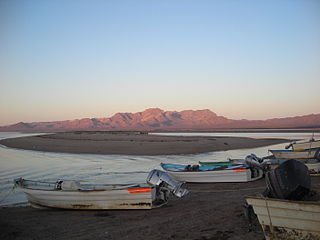
The panga is a type of modest-sized, open, outboard-powered, fishing boat common throughout much of the developing world, including Central America, the Caribbean, parts of Africa, the Middle East, and much of Asia. The original panga design was developed by Yamaha as part of a World Bank project circa 1970. Pangas are commonly operated directly off beaches. The name comes from the panga fish, which is commonly netted. The upswept bow of the boat resembles the machete or knife called a panga.

The stem is the most forward part of a boat or ship's bow and is an extension of the keel itself. It is often found on wooden boats or ships, but not exclusively.
de Havilland Marine was a division of Hawker de Havilland Australia Pty. Ltd. which is now owned by Boeing Australia and known as Boeing Aerostructures Australia.
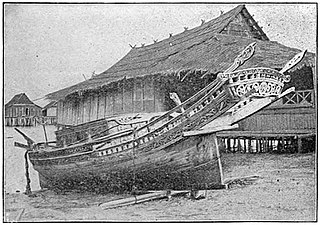
Lepa, also known as lipa or lepa-lepa, are indigenous ships of the Sama-Bajau people in the Philippines and Malaysia. They were traditionally used as houseboats by the seagoing Sama Dilaut. Since most Sama have abandoned exclusive sea-living, modern lepa are instead used as fishing boats and cargo vessels.
This glossary defines the various types of ships and accessory watercraft that have been used in service of the United States. Such service is mainly defined as military vessels used in the United States Navy and United States Coast Guard, as well as the defunct, incorporated, or renamed institutions such as the United States Revenue Cutter Service. Service of the United States can also be defined in this context as special government missions in the form of expeditions, such as the Wilkes Expedition or the North Pacific Exploring and Surveying Expedition. The scope of the glossary encompasses both the "Old Navy" of the United States, from its beginnings as the "Continental Navy", through the "New Navy" and up to modern day. The watercraft included in the glossary are derived from United States ships with logbooks published by the National Archives and Records Administration.
















